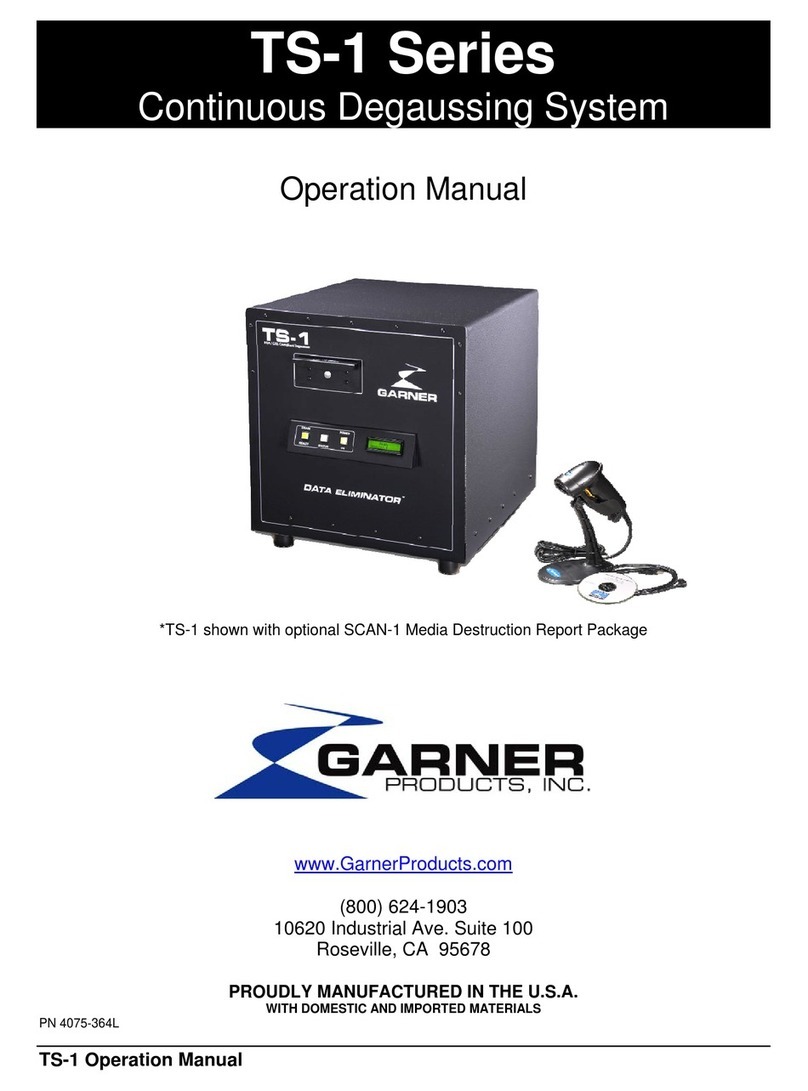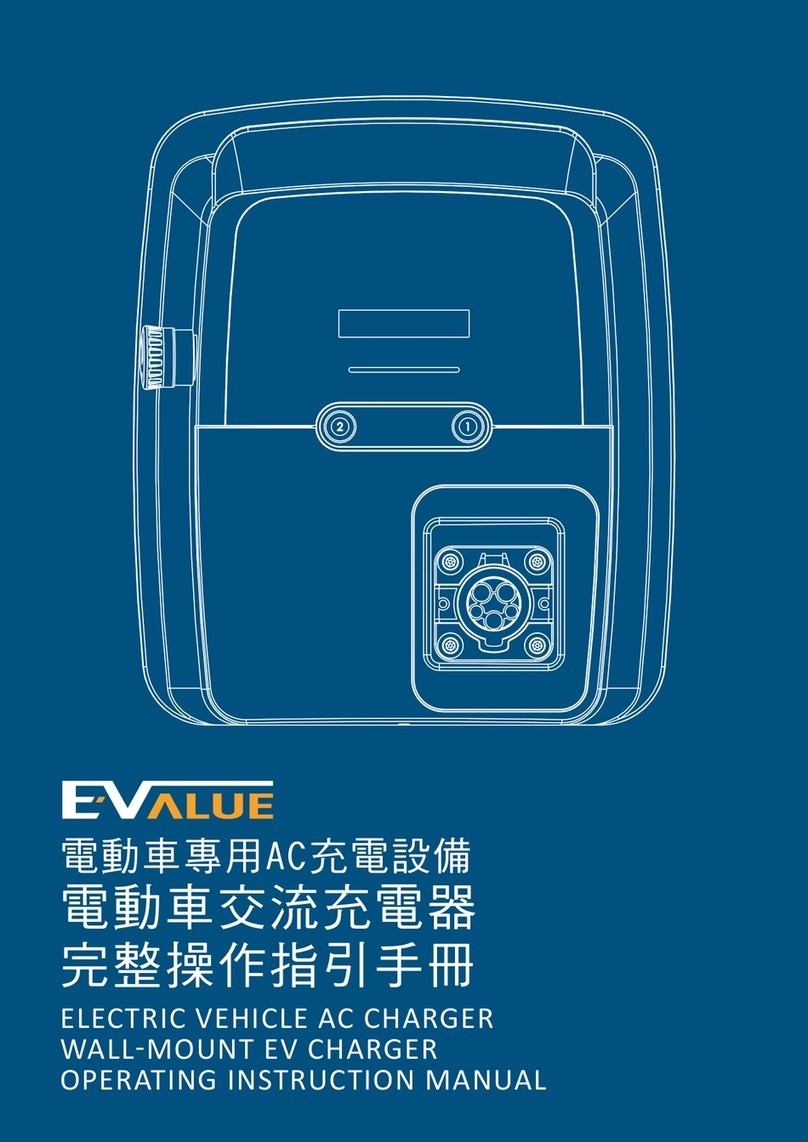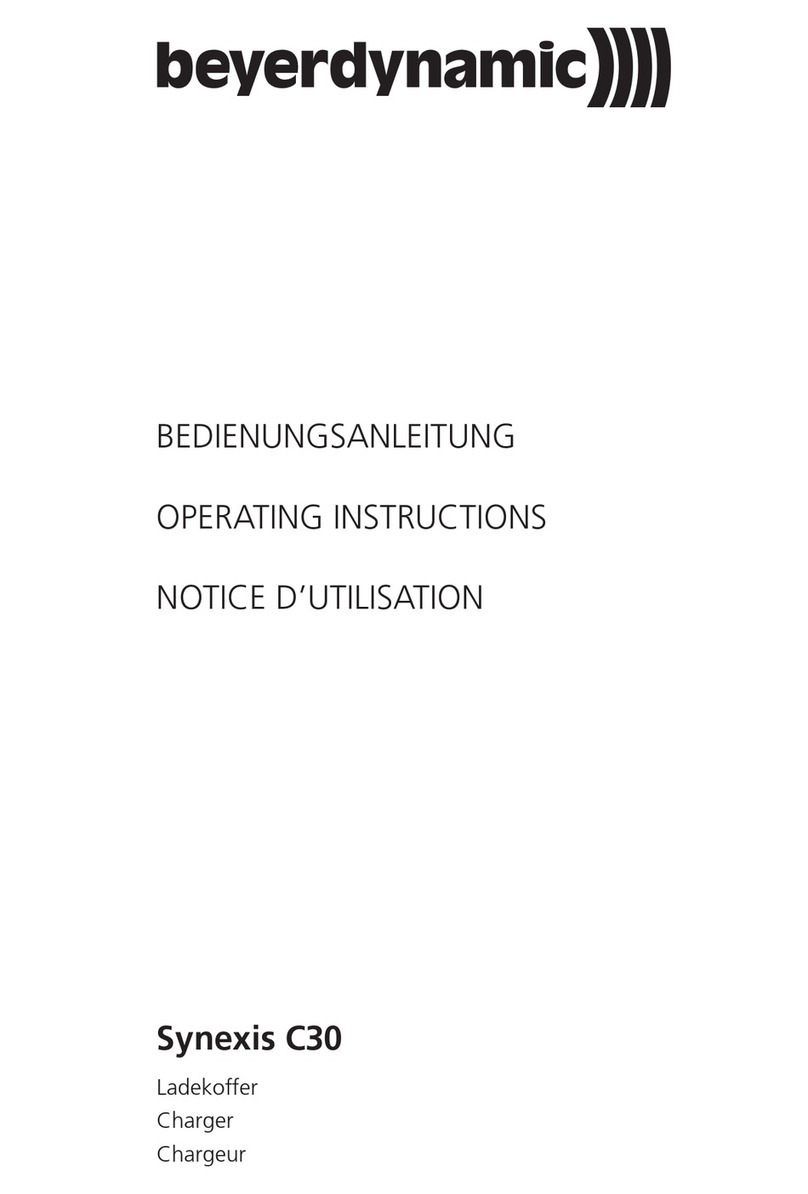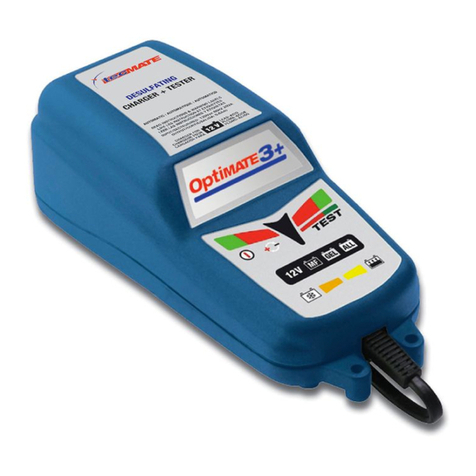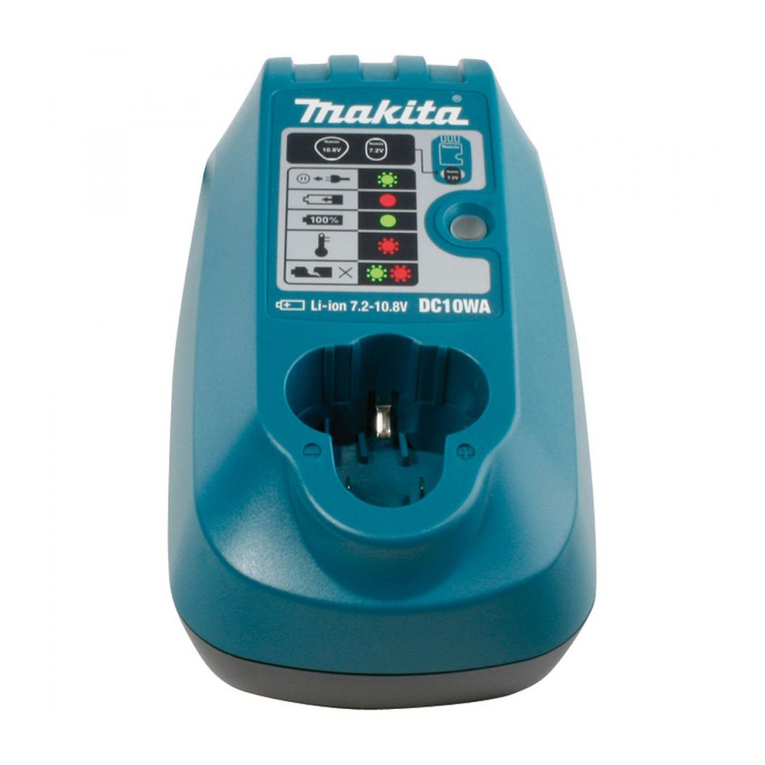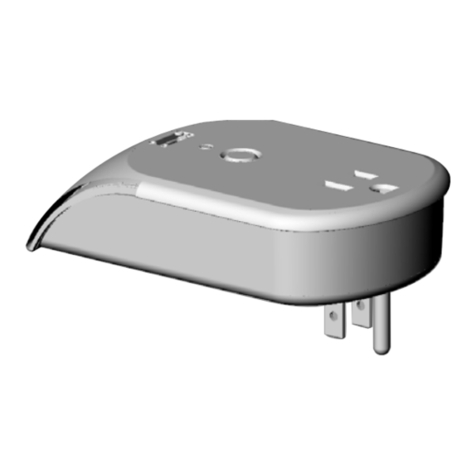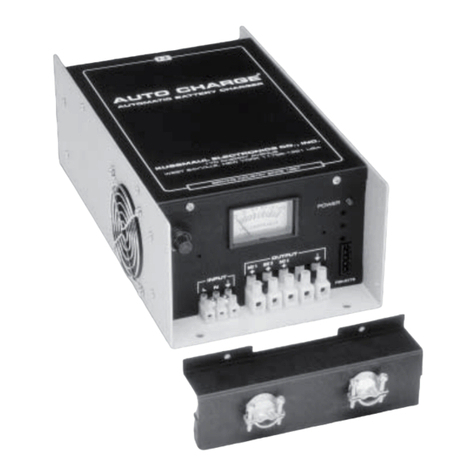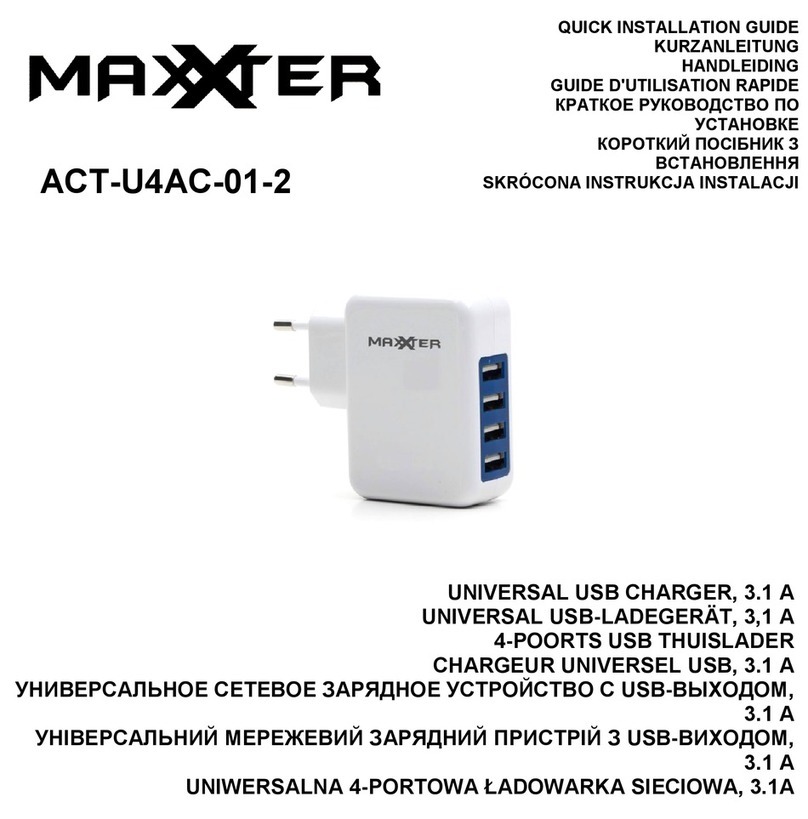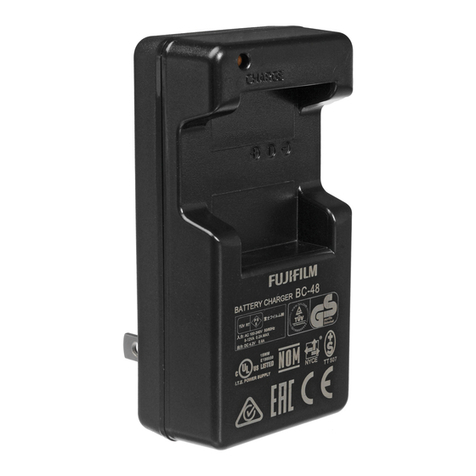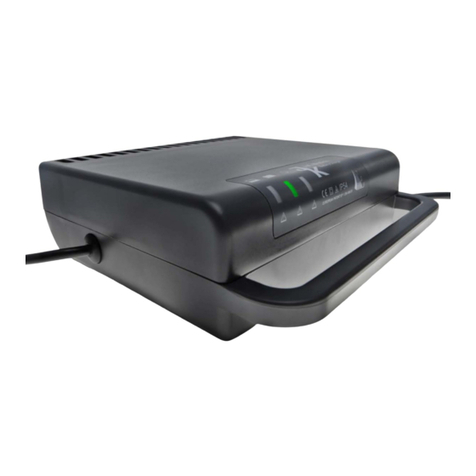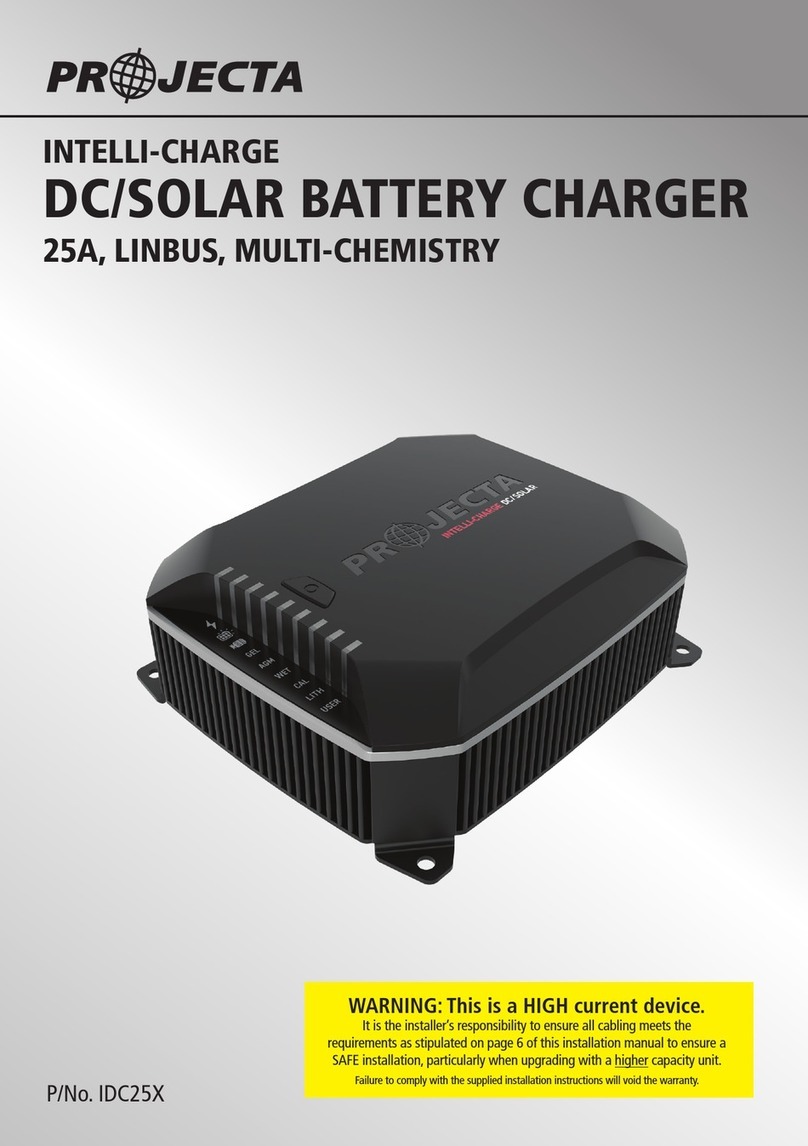Renesas ISL9241 Installation and operating instructions

Application Note
R16AN0002EU0300 Rev.3.00 Page 1
Jan 6, 2022 © 2018 Renesas Electronics
Abstract
The ISL9241 is a Buck-Boost battery charger that supports Narrow Voltage Direct Charging (NVDC) and Hybrid
Power Buck-Boost (HPBB/Bypass) operation modes. It also has special features such as Supplemental mode
(Intel Vmin Active Protection), USB On-the-Go (OTG), and USB PD operation modes (by operating the charger in
reverse direction). All modes are configurable by firmware. This document explains how to configure the ISL9241
to operate and transition between the different modes through SMBus and I2C communication.
Contents
1. ISL9241 Operation Modes . . . . . . . . . . . . . . . . . . . . . . . . . . . . . . . . . . . . . . . . . . . . . . . . . . . . . . . . . . . . . . 2
1.1 Narrow Voltage Direct Charging (NVDC) Mode . . . . . . . . . . . . . . . . . . . . . . . . . . . . . . . . . . . . . . . . . 2
1.1.1 NVDC Turbo Mode . . . . . . . . . . . . . . . . . . . . . . . . . . . . . . . . . . . . . . . . . . . . . . . . . . . . . . . . 3
1.2 Bypass Mode with Battery Charging . . . . . . . . . . . . . . . . . . . . . . . . . . . . . . . . . . . . . . . . . . . . . . . . . . 3
1.3 Reverse Turbo Boost (RTB) Mode with Battery Charging . . . . . . . . . . . . . . . . . . . . . . . . . . . . . . . . . . 4
1.4 Battery Only Mode . . . . . . . . . . . . . . . . . . . . . . . . . . . . . . . . . . . . . . . . . . . . . . . . . . . . . . . . . . . . . . . . 5
1.5 Supplemental Mode (Intel VAP) . . . . . . . . . . . . . . . . . . . . . . . . . . . . . . . . . . . . . . . . . . . . . . . . . . . . . 6
2. Transitioning Between Modes (NVDC/Bypass/RTB) . . . . . . . . . . . . . . . . . . . . . . . . . . . . . . . . . . . . . . . . 7
2.1 Transitioning from NVDC or NVDC + CHRG to Bypass . . . . . . . . . . . . . . . . . . . . . . . . . . . . . . . . . . . 8
2.2 Transitioning from Bypass to NVDC or NVDC + CHRG . . . . . . . . . . . . . . . . . . . . . . . . . . . . . . . . . . . 9
2.3 Transitioning to Charging and Reverse Turbo Boost (RTB) States . . . . . . . . . . . . . . . . . . . . . . . . . . 10
2.4 Adapter Removal Events . . . . . . . . . . . . . . . . . . . . . . . . . . . . . . . . . . . . . . . . . . . . . . . . . . . . . . . . . . 12
2.5 Calculating Wait Time . . . . . . . . . . . . . . . . . . . . . . . . . . . . . . . . . . . . . . . . . . . . . . . . . . . . . . . . . . . . 14
2.5.1 Calculating Time to Charge VSYS Node Before Turning on Bypass Gate . . . . . . . . . . . . . 14
2.5.2 Calculating Wait Time to Allow CSOP to Discharge to VBAT . . . . . . . . . . . . . . . . . . . . . . . 14
2.5.3 Calculating Time to Charge VSYS Node Before Turning on NGATE . . . . . . . . . . . . . . . . . 14
3. Transitioning to OTG Mode . . . . . . . . . . . . . . . . . . . . . . . . . . . . . . . . . . . . . . . . . . . . . . . . . . . . . . . . . . . 14
4. Transitioning to Supplemental Mode (Intel VAP) . . . . . . . . . . . . . . . . . . . . . . . . . . . . . . . . . . . . . . . . . . 15
4.1 Entering Supplemental Mode . . . . . . . . . . . . . . . . . . . . . . . . . . . . . . . . . . . . . . . . . . . . . . . . . . . . . . 15
4.2 Calculating Charge Current Limit . . . . . . . . . . . . . . . . . . . . . . . . . . . . . . . . . . . . . . . . . . . . . . . . . . . 15
4.3 Discharging Input Capacitor Before Plugging in Adapter . . . . . . . . . . . . . . . . . . . . . . . . . . . . . . . . . 15
5. Revision History . . . . . . . . . . . . . . . . . . . . . . . . . . . . . . . . . . . . . . . . . . . . . . . . . . . . . . . . . . . . . . . . . . . . 16
ISL9241 Operation Modes

R16AN0002EU0300 Rev.3.00 Page 2
Jan 6, 2022
ISL9241 Operation Modes Application Note
1. ISL9241 Operation Modes
The ISL9241 buck-boost charger supports several operation modes depending on battery availability and power
requirements. The ISL9241 can switch between modes during system operation using only firmware. When a
battery is the only power source in the system, the ISL9241 operates in Battery Only mode, consuming very little
current and transferring power to the system with very high efficiency. When an adapter is plugged into the
system, the ISL9241 starts up initially in NVDC mode and can be set up for other modes through firmware from a
controller on the board.
ISL9241 Operation Modes:
▪NVDC mode (default): see Narrow Voltage Direct Charging (NVDC) Mode
▪Bypass mode with battery charging: see Bypass Mode with Battery Charging
▪Reverse Turbo mode with battery charging: see Reverse Turbo Boost (RTB) Mode with Battery Charging
▪Battery Only mode: see Battery Only Mode
▪Supplemental mode (Intel Vmin Active Protection (VAP)): see Supplemental Mode (Intel VAP)
1.1 Narrow Voltage Direct Charging (NVDC) Mode
In Narrow Voltage Direct Charging (NVDC) mode, the power from the adapter provides power to the system loads
and for battery charging. All power from the adapter passes through the power stage and the inductor. The
advantage of NVDC mode is that the system voltage can be regulated near the battery voltage. This allows you to
select lower voltage components for all the voltage regulators connected at the output system node, resulting in
smaller size and higher efficiency in the subsequent stages. This mode is more suitable for lower power operation
and for operation in Boost mode and Buck-Boost mode.
.
Figure 1. NVDC Operation Mode
When the system power increases, the available adapter power provides power to the system first. Any remaining
power is used to charge the battery.
InputPower
SystemPower
Battery
ChargePower
BatteryDischarge
PowerorTurbo
ModePower
SwitchisON

R16AN0002EU0300 Rev.3.00 Page 3
Jan 6, 2022
ISL9241 Operation Modes Application Note
1.1.1 NVDC Turbo Mode
When the system power exceeds the power that can be provided by the adapter, the ISL9241 regulates the
adapter current at the Adapter Current Limit value. The remaining power to the system is provided from the
battery, so the adapter and the battery provide the system power together. This is called NVDC Turbo mode.
1.2 Bypass Mode with Battery Charging
When the adapter voltage is higher than the battery voltage, the ISL9241 can be operated in Bypass mode. In
Bypass mode, the adapter is connected directly to the system and the system power is provided directly from the
adapter. The charging and discharging power goes through the power stage and inductor.
When the available adapter power is higher than the power consumed by the system, the remaining power is used
to charge the battery. When the battery is not charging, the converter is not switching. When charging starts, the
converter starts switching in the forward direction, delivering power from the adapter to charge the battery.
Figure 2. Bypass Mode with Battery Charging
Input Power
System Power
Battery
Charge Power
Switch is OFF, but diode path
supports power from the
battery (VADP > VBAT to use
Bypass mode)

R16AN0002EU0300 Rev.3.00 Page 4
Jan 6, 2022
ISL9241 Operation Modes Application Note
1.3 Reverse Turbo Boost (RTB) Mode with Battery Charging
If the ISL9241 is configured to operate in Bypass mode, Reverse Turbo Boost (RTB) mode can be enabled. RTB
mode is useful when the adapter alone cannot handle the peak power demands from the system. In RTB mode,
the battery supplements the adapter power by operating the ISL9241 in the reverse direction.
Initially, when the system load is lower than the adapter power, all the system power is provided from the adapter.
As the system load increases, the ISL9241 provides power from the adapter up to the programmed Adapter
Current Limit. When the Adapter Current Limit is reached, the ISL9241 operates in the reverse direction, boosting
up the power from the battery and providing the remaining needed power in addition to the adapter power. The
ISL9241 can go from forward battery charging to RTB mode automatically depending on the load demand. When
RTB mode is enabled, the battery FET (connected to BGATE) is always turned on.
Figure 3. Reverse Turbo Boost with Battery Charging
Input Power
System Power
Reverse Turbo
Power Mode
Switch is OFF, but
diode path
supports discharge
from the battery
(VADP > VBAT to
use Bypass mode)

R16AN0002EU0300 Rev.3.00 Page 5
Jan 6, 2022
ISL9241 Operation Modes Application Note
1.4 Battery Only Mode
When no adapter is present in the system, the ISL9241 provides all system load demands directly from the
battery. In this case, the system power passes only through the Battery FET and the FET connected to NGATE, so
the efficiency in Battery Only mode is very high. Because the control loop and several features are not needed in
Battery Only mode, these features can be turned off and the ISL9241 can operate in a low power state,
consuming very little current for operation.
When the ISL9241 is operating in Battery Only mode, you can connect a battery-powered device to the USB port
(adapter side). The ISL9241 can support battery-powered devices by operating in the reverse direction and
providing power from the battery to the adapter terminal/USB port. This is called On-the-Go (OTG) mode, but
supports USB-OTG and USB-PD. The ISL9241 can operate in Reverse Buck/Boost mode or Buck-Boost mode
and provides a programmable 5V to 20V output at the USB port.
Figure 4. Battery Only Mode and OTG Mode
OTGPower
SystemPower
BatteryMode
Power
SwitchisON

R16AN0002EU0300 Rev.3.00 Page 6
Jan 6, 2022
ISL9241 Operation Modes Application Note
1.5 Supplemental Mode (Intel VAP)
Use Supplemental mode or Intel VMIN Active Protection (VAP) when the battery voltage is sufficient to provide
power to the system but the impedance from the battery to the system causes a large voltage drop, limiting the
power that can be drawn without crashing the system. This mode also supports rare peak power events that are
higher than what the battery power can support. Use this mode when there is only a battery in the system and the
adapter port is open.
When the battery voltage is high, the ISL9241 operates in reverse direction (OTG mode) and stores some energy
from the battery in the input capacitors (on the adapter side) at high voltage.
If the system voltage starts falling below a threshold during a high system load event due to high battery
impedance or low battery voltage, the energy from the input capacitor supplements the battery power and holds
up the system voltage until the load event ends.
After receiving the command to exit the mode, the energy stored in the input capacitors can be discharged using
an internal discharge path so that an external power source can be safely connected.
This mode’s setup can be controlled by an external microcontroller or host controller on the system. Several
parameters can be programmed to achieve the needed response from the ISL9241.
Figure 5. Supplemental Mode (Intel VMIN Active Protection)
SystemPower
BatteryMode
Power
SwitchisON
OTGfor
StoredPower
StoredPower
onCapacitor

R16AN0002EU0300 Rev.3.00 Page 7
Jan 6, 2022
ISL9241 Operation Modes Application Note
2. Transitioning Between Modes (NVDC/Bypass/RTB)
You can use firmware commands to configure the ISL9241 to transition between the different modes. Figure 6
shows the major and minor states that the ISL9241 can operate in and the transitions between them. The
commands in this document are suggestions/recommendations. You can start with these commands for your first
implementation/evaluation, but you must test the commands on your system to see if the commands need to be
modified for your application in your final implementation.
Bypass State: Set up the system with the Bypass gates ON to make VSYS = VADP and allow flow of current from
the adapter directly to the load. In this state, the adapter is connected directly to the system, but the ISL9241 is not
switching, so the charging and reverse turbo boost functions are disabled.
(BYPSG = on, NGATE = off, BGATE = off, MaxSysV = 0, RTB bit = 0, CC = 0, MinSysV= 0)
Bypass + Charging State: The adapter is connected directly to the system (Bypass) and charging is enabled, but
the turbo boost function is disabled. Use this state when the adapter can support the entire system load.
(BYPSG = on, NGATE = off, BGATE = on, MaxsysV = non-zero, RTB bit = 0, CC = non-zero, MinsysV = non-zero)
Reverse Turbo-Boost State (RTB): The Bypass gates are ON and Reverse Turbo Boost is enabled and primed
to meet any load requirements. The battery can supplement the adapter to provide power in this mode. Charging
is disabled.
(BYPSG = on, NGATE = off, BGATE = on, MaxsysV = non-zero, RTB bit = 1, CC = 0, MinsysV = 0)
RTB + Charging State: An extension of RTB with battery charging enabled.
(BYPSG = on, NGATE = off, BGATE = on, MaxsysV = non-zero, RTB bit = 1, CC = non-zero, MinsysV = non-zero)
Bat State: Reached when the adapter is unplugged and ACOK goes low. The system load is supported by the
battery.
(BYPSG = off, NGATE = on, BGATE = on, MaxsysV = non-zero, RTB bit = 0, CC = 0, MinsysV = 0)
Figure 6. Transition State Diagram
6WDWH
.
,QVW
1XP
.
/HJHQG
6WDWH%XEEOH
,QVWUXFWLRQV
(YHQW'ULYHQ,QVWUXFWLRQV
19'&
%\SDVV
57%
%\SDVV
&KUJ
57%
&KUJ
$
&
'
(
),+
*
-
%
19'&
&KUJ
./
%DW
0
0
00
1
,QVW
1XP
*Renesas recommends going to RTB
only if VBAT > MinSysVoltage

R16AN0002EU0300 Rev.3.00 Page 8
Jan 6, 2022
ISL9241 Operation Modes Application Note
2.1 Transitioning from NVDC or NVDC + CHRG to Bypass
Note: To transition from NVDC mode to Bypass mode, turn off charging first. The system load must be reduced so
that the ISL9241 input current never exceeds the Adapter Current Limit, ensuring smooth transition.
The output voltage of the ISL9241 is raised to the adapter voltage and the Bypass FETs are closed. When the
system is connected to the adapter, NGATE is turned off to isolate the system from the output of the ISL9241. The
ISL9241 output is then ramped down close to the battery voltage so that charging can be enabled safely any time.
The steps in Table 1 ensure that the transition and subsequent operation are smooth. You can skip any of the
recommended steps (in yellow) if you test and verify that your system works smoothly and without any glitches
without the step.
Table 1. Transitioning from NVDC (or NVDC + CHRG) Mode to Bypass Mode
Step
Number Function Description Register Name Value (Decimal)
Read/
Write
Register
Address
LNVDC + CHRG to NVDC
1 Set Charge current register to 0 to disable fast
charging
ChargeCurrentLimit 0 Write 0x14
2 Set MinSysVoltage register to 0 to disable
trickle charging
MinSysVoltage 0 Write 0x3E
ANVDC to Bypass
Preparation Set adapter current limit to appropriate value ACLIM Adapter specific Write 0x3F
Preparation Reduce system load below ACLIM
Preparation Enable ADC (to read ADC values) if using it
after Step2
Control 3 <0> 1 Write 0x4C
1 Turn on the VIN/VOUT comparator so the
Bypass gate turns off when the adapter is
removed
Control 0<5> 1 Write 0x39
2 Set MaxsysV = VADP (from ADC or PD
controller) - 2V
For 20V adapter, set 18.304V
Vin ADC Read 0x87
MaxSysVoltage
register
Vin ADC
register - 2V
Write 0x15
Three options:
▪Wait fixed time (see Calculating Wait Time to
calculate wait time)
▪Wait fixed time and read ADC to confirm
VSYS = MaxsysV register
▪Poll ADC and check when VSYS = MaxsysV
register
3 Set ACOK reference to (800mV + ADC
tolerance) higher than the battery full charge
voltage (so the charger can detect and let the
input ramp down during adapter removal
events) and also Vin_ADC - 3V to account for
ADC tolerance and I*R drop
ACOKREF Vin_min - I*R
drop (~2V) >
ACOKREF >
VBAT+1.1V
Write 0x40
4 Turn on Bypass gate, turn off NGATE, set
Charge pumps to 100% and Enable 10mA
current source
Control 0 Hex 3860 Write 0x39
5 Stop switching after 1ms (Wait time for Bypass
FET to turn on)
MaxsysV register 0 Write 0x15
6 Disable 10mA discharge on CSOP Control 0 Hex 1860 Write 0x39
7 Force Forward Buck/ Reverse Boost mode Control 4<10> 1 Write 0x4E

R16AN0002EU0300 Rev.3.00 Page 9
Jan 6, 2022
ISL9241 Operation Modes Application Note
Suggestions:
▪If the adapter is removed at any time and ACOK goes low during Steps 1 to 3, stop executing the commands
and complete steps for Bypass to BAT state.
▪If the adapter is removed after Step 4, complete all steps and then execute the commands for Bypass to BAT.
▪If the adapter is removed after completing all steps, first transition to Bypass state (from Bypass+Charging or
Reverse Turbo Boost) and then transition to BAT state.
▪CV mode regulation is not recommended in Bypass mode without Charging or Reverse Turbo boost. So enable
charging and Reverse Turbo Boost along with setting MaxsysV to non-zero value.
▪NGATE FET and Bypass FET power good signals can be read from the Information 1 register (0x3A) to ensure
that there is no unexpected behavior in the system.
▪Enable slew rate if output caps are high and inrush can be high to prevent protection from tripping. Capacitor
can be added on Bypass gate if inrush during turn on needs to be limited.
2.2 Transitioning from Bypass to NVDC or NVDC + CHRG
Note: To transition from Bypass mode to NVDC, turn off charging and RTB mode first. The system load must be
reduced so that the system current never exceeds the ISL9241 Adapter Current Limit value.
After turning off the battery FET, the ISL9241 output is ramped up to the adapter voltage. The NGATE FET is
closed, connecting the output of the ISL9241 to the system. The Bypass FETs then open, isolating the adapter
and the system output. The ISL9241 output and system are ramped down close to the battery voltage so that
charging can be enabled safely any time. The system is regulated close to the battery voltage at the value
programmed in the MaxSystemVoltage register. Complete the steps in Tabl e 2 to transition from Bypass mode to
NVDC mode or NVDC + Charge mode.
Table 2. Transitioning from Bypass Mode to NVDC (or NVDC + CHRG) Mode
Step
Number Function Description Register Name
Value
(Decimal) Read/ Write
Register
Address
BBypass to NVDC
Preparatio
n
Reduce system load below ACLIM
1 Disable Force Forward Buck/ Reverse Boost
mode
Control 4<10> 0 Write 0x4E
2 Turn off VIN/VOUT comparator Control 0<5> 0 Write 0x39
3 Set MaxSysVoltage = VADP (from ADC or
PD controller) - 2V
For 20V adapter, set 18.304V
Vin ADC register Read 0x87
MaxSysVoltage
register
Vin ADC
register - 2V
Write 0x15
Three options:
▪Wait fixed time (see Calculating Wait Time
to calculate wait time)
▪Wait fixed time and read ADC to confirm
VSYS = MaxSysVoltage register
▪Poll ADC and check when
VSYS = MaxsysV register
4 Turn off Bypass gate, turn on NGATE, set
charge pumps to 100%, Enable 10mA
current source
Control 0 Hex 2040 Write 0x39
5 Set MaxSysVoltage = Battery full charge
voltage after 1ms
MaxSysVoltage
register
Battery specific Write 0x15

R16AN0002EU0300 Rev.3.00 Page 10
Jan 6, 2022
ISL9241 Operation Modes Application Note
2.3 Transitioning to Charging and Reverse Turbo Boost (RTB) States
When the ISL9241 has transitioned completely into Bypass mode (or NVDC mode), enable the charging and/or
Reverse Turbo Boost (RTB) modes using the commands in Table 3.
6 Disable 10mA discharge on CSOP after
10ms (or until CSOP ramps down to
MaxsysV), set charge pumps to 2%
Control 0 Hex 0000 Write 0x39
KNVDC to
NVDC + CHRG
1 Set MinSysVoltage to non-zero value to
enable trickle charging
MinSysVoltage Battery specific Write 0x3E
2 Set charge current limit to non-zero value to
allow charging
ChargeCurrentLimi
t
Battery specific Write 0x14
Table 3. Transitioning Between Bypass Mode and Charging and Reverse Turbo Boost States
Transition From State To State
Step
Number Function Description Register Name
Value
(Decimal)
Register
Address
CBypassRTB
(Reverse
Turbo Boost)
1 Reduce system load
below ACLIM
2 Enable Reverse Turbo
Boost function
Control 0<0> 1 0x39
3 Set MaxSysVoltage
register to full battery
charge voltage
MaxSysVoltage Battery
specific
0x15
DRTBRTB+
CHRG
1 Set MinSysVoltage to
non-zero value to enable
trickle charging
MinSysVoltage Battery
specific
0x3E
2 Set charge current limit to
non-zero value to allow
charging
ChargeCurrentLimit Battery
specific
0x14
ERTB+
CHRG
RTB 1 Disable fast charging ChargeCurrentLimit 0 0x14
2 Disable trickle charging MinSysVoltage 0 0x3E
F RTB Bypass 1 Reduce system load
below ACLIM
2 Disable switching MaxSysVoltage 0 0x15
3 Disable reverse turbo
boost function
Control 0<0> 0 0x39
Table 2. Transitioning from Bypass Mode to NVDC (or NVDC + CHRG) Mode (Cont.)
Step
Number Function Description Register Name
Value
(Decimal) Read/ Write
Register
Address

R16AN0002EU0300 Rev.3.00 Page 11
Jan 6, 2022
ISL9241 Operation Modes Application Note
G Bypass Bypass+
CHRG
1 Set MinSysVoltage to a
non-zero value to enable
trickle charging
MinSysVoltage Battery
specific
0x3E
2 Set charge current limit to
a non-zero value to allow
charging
ChargeCurrentLimit Battery
specific
0x14
3 Set MaxSysVoltage
register to full battery
charge voltage
MaxSysVoltage Battery
specific
0x15
H Bypass +
CHRG
RTB+
CHRG
1 Reduce system load
below ACLIM
2 Enable Reverse Turbo
Boost function
Control 0<0> 1 0x39
IRTB+
CHRG
Bypass+
CHRG
1 Reduce system load
below ACLIM
2 Disable reverse turbo
boost function
Control 0<0> 0 0x39
J Bypass +
CHRG
Bypass 1 Disable switching MaxSysVoltage 0 0x15
2 Disable fast charging ChargeCurrentLimit 0 0x14
3 Disable trickle charging MinSysVoltage 0 0x3E
Table 3. Transitioning Between Bypass Mode and Charging and Reverse Turbo Boost States (Cont.)
Transition From State To State
Step
Number Function Description Register Name
Value
(Decimal)
Register
Address

R16AN0002EU0300 Rev.3.00 Page 12
Jan 6, 2022
ISL9241 Operation Modes Application Note
2.4 Adapter Removal Events
When the ISL9241 operates in NVDC mode, it can automatically detect adapter removal and operate in Battery
Only mode independently. When the ISL9241 is in Bypass mode (with or without charging and Reverse Turbo
Boost), it can still detect the adapter removal event, but may need additional commands from the host controller to
turn off Bypass FETs and turn on the NGATE FETs so it can deliver full power from the battery with minimal
voltage drop and loss. These commands from the host also ensure that the Bypass FETs are not automatically
turned on when the adapter is plugged in the next time (for example, a low voltage adapter that cannot support
Bypass mode).
Table 4. Adapter Removal Events[1]
From State To State
Step
Number Function Description Register Name
Value
(Decimal)
Register
Address
Bypass BAT Monitor ACOK – when ACOK
goes low, complete the following
steps before connecting another
adapter
1 Disable Force Forward
Buck/Reverse Boost bit
Control 4 0 0x4E
2 Turn off BYPSG, Turn on
NGATE, Disable Charge pump
100% and disable VIN<VOUT
comparator
Control 0 0 0x39
3 Set MaxSysVoltage register to
full charge voltage
MaxSysVoltage Battery or
system specific
0x15
4 Disable ADC Control 3 300 0x4C
5 BGATE to Normal operation Control 1 <6> 0 0x3C
6 Reset ACOKref register to
normal value to detect low
voltage (5V or 9V) adapter during
next plug in event
ACOKREF 3.6V or desired
level
0x40
Bypass +
CHRG
BAT Monitor ACOK – when ACOK
goes low, complete the following
steps before connecting another
adapter
ACOK must be set above
MaxSysVoltage for this mode
1 Disable Force Forward
Buck/Reverse Boost bit
Control 4 0 0x4E
2 Set Charge Current to 0 to
disable fast charging
ChargeCurrentLimit 0 0x14
3 Set MinSysVoltage to 0 to
disable trickle charging
MinSysVoltage 0 0x3E
4 Turn off BYPSG, turn on NGATE,
disable charge pump 100% and
disable VIN<VOUT comparator
Control 0 0 0x39
5 Disable ADC Control 3 300 0x4C
6 BGATE to Normal operation Control 1 <6> 0 0x3C
7 Reset ACOKref register to
normal value to detect low
voltage (5V or 9V) adapter during
next plug in event
ACOKREF 3.6V or desired
level
0x40

R16AN0002EU0300 Rev.3.00 Page 13
Jan 6, 2022
ISL9241 Operation Modes Application Note
RTB BAT Monitor ACOK – complete the
following steps before connecting
another adapter
1 Disable Force Forward
Buck/Reverse Boost bit
Control 4 0 0x4E
2 Turn off BYPSG, turn on NGATE,
disable charge pump 100% and
disable VIN<VOUT comparator,
disable Reverse Turbo Boost
Control 0 0 0x39
3 Disable ADC Control 3 300 0x4C
4 BGATE to Normal operation Control 1 <6> 0 0x3C
5 Reset ACOKref register to
normal value to detect low
voltage (5V or 9V) adapter during
next plug in event
ACOKREF 3.6V or desired
level
0x40
RTB +
CHRG
BAT Monitor ACOK – complete the
following steps before connecting
another adapter
1 Disable Force Forward
Buck/Reverse Boost bit
Control 4 0 0x4E
2 Set Charge Current to 0 to
disable fast charging
ChargeCurrentLimit 0 0x14
3 Set MinSysVoltage to 0 to
disable trickle charging
MinSysVoltage 0 0x3E
4 Turn off BYPSG, turn on NGATE,
disable charge pump 100% and
disable VIN<VOUT comparator
Control 0 0 0x39
5 Disable ADC Control 3 300 0x4C
6 BGATE to Normal operation Control 1 <6> 0 0x3C
7 Reset ACOKref register to
normal value to detect low
voltage (5V or 9V) adapter during
next plug in event
ACOKREF 3.6V or desired
level
0x40
BAT NVDC Monitor ACOK – when ACOK
goes High, automatically
transition to NVDC
---
1. The register values shown are an example. Modify these values for your platform.
Table 4. Adapter Removal Events[1] (Cont.)
From State To State
Step
Number Function Description Register Name
Value
(Decimal)
Register
Address

R16AN0002EU0300 Rev.3.00 Page 14
Jan 6, 2022
ISL9241 Operation Modes Application Note
2.5 Calculating Wait Time
The following sections provide expressions to calculate the wait time for a given platform.
2.5.1 Calculating Time to Charge VSYS Node Before Turning on Bypass Gate
Before enabling the Bypass gates, the VSYS output must be almost equal to VADP to avoid any large current
shoot-through that can damage bypass gates. The MaxSysVoltage register must be set to VADP – [safe margin].
VSYS is then ramped up. The time to proceed to the next step can be determined in several ways. You can use a
fixed wait time or use the ADC to check when VSYS reaches VADP – [safe margin]. To calculate the fixed wait
time, note that the VSYS ramp rate is usually limited by the adapter current loop. The estimated ramp time can be
determined by Equation 1:
Renesas recommends setting the fixed wait time to twice the T value to account for approximations. Set the safe
margin to around 1% of the VADP voltage avoid any gain errors that can cause the output to be higher than the
set value. Lower values can result a higher current event because the Bypass FET has a low rDS(ON). Note: the
MaxSystemVoltage register is limited to a maximum output of 18.304V.
2.5.2 Calculating Wait Time to Allow CSOP to Discharge to VBAT
A 10mA discharge current is applied on the CSOP pin. This implies the time taken to discharge is:
2.5.3 Calculating Time to Charge VSYS Node Before Turning on NGATE
The MaxSystemVoltage register is set to VADP – [safe margin]. This is again done to avoid high current events
while turning NGATE FET on. The MaxSystemVoltage register is limited to a max output of 18.304V. To determine
if the output voltage has ramped up to the correct value, use a fixed wait time (or ADC poll). Use Equation 3 to
calculate the time:
Renesas recommends setting the fixed wait time to twice the T value to account for approximations.
3. Transitioning to OTG Mode
You can transition to OTG mode from Battery Only mode two ways:
▪If the General purpose comparator is enabled, use the Enable OTG mode control bit (Control1<11>) to enable
OTG mode (the OTGEN pin and Supplemental mode bit are “do not care” conditions in this case)
▪If the General purpose comparator is disabled, turn on the OTGEN pin and enable the OTG mode control bit
(Control1<11>) to turn on OTG mode. Ensure the Supplemental mode bit is disabled
(EQ. 1)
(EQ. 2)
(EQ. 3)
T
COUT
VADP ILIM
------------------------------------VSYS2initialVSYS2initial–
2
----------------------------------------------------------------------------------------
=
T
CCSOP VCSOP VBAT
–
IDISCHARGE
-------------------------------------------------------------------------
=
T
CCSOP
VADP ILIM
-------------------------------------CCSOP 2finalVCSOP 2initial–
2
-------------------------------------------------------------------------------------------------
=

R16AN0002EU0300 Rev.3.00 Page 15
Jan 6, 2022
ISL9241 Operation Modes Application Note
4. Transitioning to Supplemental Mode (Intel VAP)
4.1 Entering Supplemental Mode
Complete the following steps to enter Supplemental mode from Battery Only mode.
1. Set the OTGEN pin to high.
2. Set the Charge current limit to 1A (or a calculated value).
3. Disable the general purpose comparator (Control 2 <3>).
4. Disable the digital OV/ OTGUV.
5. Disable the analog OV.
6. Set DCHOT to 8A.
7. Set OTGVoltage to 20V.
8. Enable the Supplemental mode bit (Control 1<10>).
9. Disable Supplemental mode by disabling the Supplemental mode register bit or by setting the OTGEN pin to
low.
4.2 Calculating Charge Current Limit
OTG mode has a current limit set by the OTGCurrent register. Because Supplemental mode charges the input
capacitor, the current does not flow through the sense resistor so it cannot be used to control the current. Enabling
Supplemental mode with 20V OTGVoltage can result in a high slew rate on the voltage and high current from the
battery. To prevent battery discharge current from reducing the VSYS voltage, limit the slew on the input capacitor
by limiting the battery discharge current.
The amount of battery discharge current allowed varies with battery voltage. For example, under the following
hypothetical conditions, the charge current limit should be set to 2A.
Low_VSYS_PROCHOT# = 6V
VBAT =6.8V
Total impedance from battery pack to VSYS = 0.2Ω
Total battery discharge current allowed = (VBAT - Low_VSYS_PROCHOT#)/Rimp = 4A
To limit the battery discharge current to 4A, set the charge current limit register to half of 4A (2A).
Because battery discharge current is more critical at low battery voltages, you can set a higher discharge current
limit when the battery is high and a lower value when battery gets close to the Low_VSYS_PROCHOT# setting.
4.3 Discharging Input Capacitor Before Plugging in Adapter
There are two options to discharge the input capacitor if an adapter plug in event is detected before the adapter is
connected to the ISL9241 input (before closing the back to back FETs before the ISL9241).
▪Control 0<15> lets the system controller discharge the input capacitor at any time using a 10mA internal current
source on the CSIN pin
▪Control 0 <14> automatically discharges the input capacitor using the 10mA source for 50ms if Supplemental
mode is exited and the ISL9241 enters the READY state

R16AN0002EU0300 Rev.3.00 Page 16
Jan 6, 2022
ISL9241 Operation Modes Application Note
5. Revision History
Rev. Date Description
3.00 Jan 6, 2022 Applied new template.
Removed Related Literature section.
Updated Transitioning from NVDC or NVDC + CHRG to Bypass section.
Updated Tables 1 and 2.
2.00 Jan 10, 2019 Changed the order of steps in the NVDC Mode to Bypass Mode steps.
Added steps to the Adapter unplug/removal events - to set BGATE to normal operation and adjust
ACOKREF in all transitions to BAT state on page 9.
Added last two sentences in the first paragraph of Section 2 on page 7.
1.01 Dec 11, 2018 Corrected list of figures on page 1.
1.00 Oct 23, 2018 Initial release

Corporate Headquarters
TOYOSU FORESIA, 3-2-24 Toyosu,
Koto-ku, Tokyo 135-0061, Japan
www.renesas.com
Contact Information
For further information on a product, technology, the most
up-to-date version of a document, or your nearest sales
office, please visit:
www.renesas.com/contact/
Trademarks
Renesas and the Renesas logo are trademarks of Renesas
Electronics Corporation. All trademarks and registered
trademarks are the property of their respective owners.
IMPORTANT NOTICE AND DISCLAIMER
RENESAS ELECTRONICS CORPORATION AND ITS SUBSIDIARIES (“RENESAS”) PROVIDES TECHNICAL
SPECIFICATIONS AND RELIABILITY DATA (INCLUDING DATASHEETS), DESIGN RESOURCES (INCLUDING
REFERENCE DESIGNS), APPLICATION OR OTHER DESIGN ADVICE, WEB TOOLS, SAFETY INFORMATION, AND
OTHER RESOURCES “AS IS” AND WITH ALL FAULTS, AND DISCLAIMS ALL WARRANTIES, EXPRESS OR IMPLIED,
INCLUDING, WITHOUT LIMITATION, ANY IMPLIED WARRANTIES OF MERCHANTABILITY, FITNESS FOR A
PARTICULAR PURPOSE, OR NON-INFRINGEMENT OF THIRD PARTY INTELLECTUAL PROPERTY RIGHTS.
These resources are intended for developers skilled in the art designing with Renesas products. You are solely responsible
for (1) selecting the appropriate products for your application, (2) designing, validating, and testing your application, and (3)
ensuring your application meets applicable standards, and any other safety, security, or other requirements. These
resources are subject to change without notice. Renesas grants you permission to use these resources only for
development of an application that uses Renesas products. Other reproduction or use of these resources is strictly
prohibited. No license is granted to any other Renesas intellectual property or to any third party intellectual property.
Renesas disclaims responsibility for, and you will fully indemnify Renesas and its representatives against, any claims,
damages, costs, losses, or liabilities arising out of your use of these resources. Renesas' products are provided only subject
to Renesas' Terms and Conditions of Sale or other applicable terms agreed to in writing. No use of any Renesas resources
expands or otherwise alters any applicable warranties or warranty disclaimers for these products.
(Rev.1.0 Mar 2020)
Table of contents
Other Renesas Batteries Charger manuals


